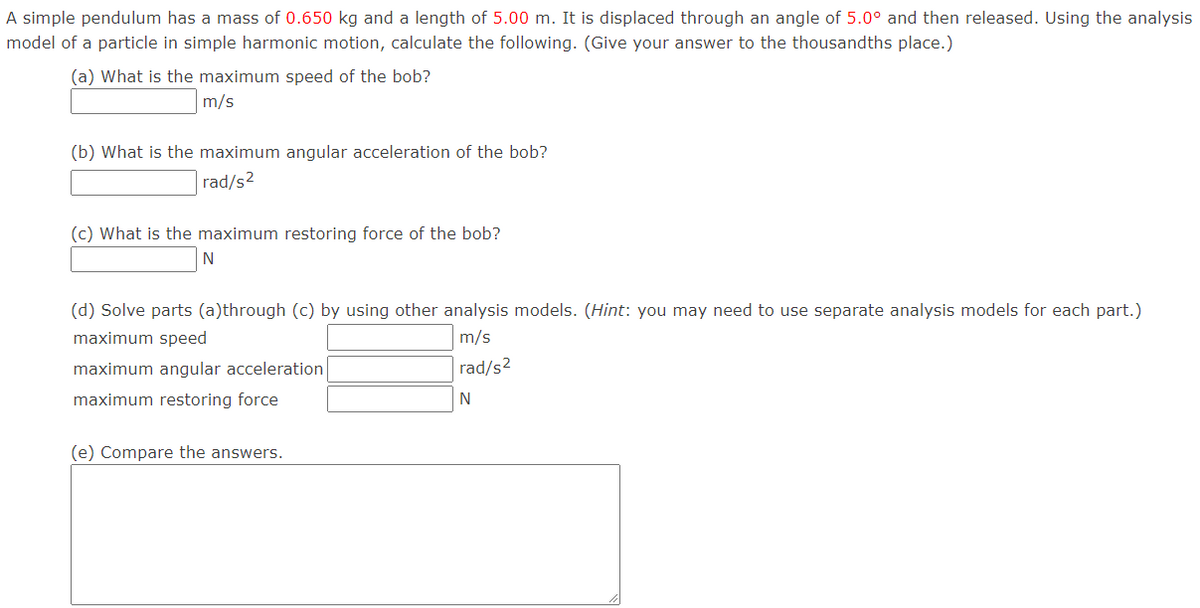A simple pendulum has a mass of 0.650 kg and a length of 5.00 m. It is displaced through an angle of 5.0° and then released. Using the analysis model of a particle in simple harmonic motion, calculate the following. (Give your answer to the thousandths place.) (a) What is the maximum speed of the bob? m/s (b) What is the maximum angular acceleration of the bob? rad/s2 (c) What is the maximum restoring force of the bob? N (d) Solve parts (a)through (c) by using other analysis models. (Hint: you may need to use separate analysis models for each part.) maximum speed maximum angular acceleration m/s rad/s2 N maximum restoring force (e) Compare the answers.
Simple harmonic motion
Simple harmonic motion is a type of periodic motion in which an object undergoes oscillatory motion. The restoring force exerted by the object exhibiting SHM is proportional to the displacement from the equilibrium position. The force is directed towards the mean position. We see many examples of SHM around us, common ones are the motion of a pendulum, spring and vibration of strings in musical instruments, and so on.
Simple Pendulum
A simple pendulum comprises a heavy mass (called bob) attached to one end of the weightless and flexible string.
Oscillation
In Physics, oscillation means a repetitive motion that happens in a variation with respect to time. There is usually a central value, where the object would be at rest. Additionally, there are two or more positions between which the repetitive motion takes place. In mathematics, oscillations can also be described as vibrations. The most common examples of oscillation that is seen in daily lives include the alternating current (AC) or the motion of a moving pendulum.

Trending now
This is a popular solution!
Step by step
Solved in 2 steps






